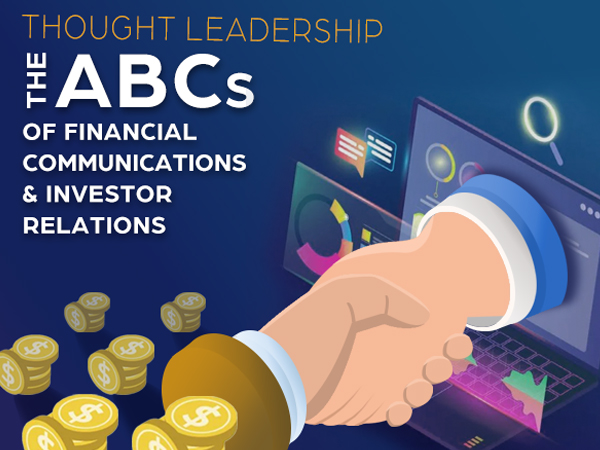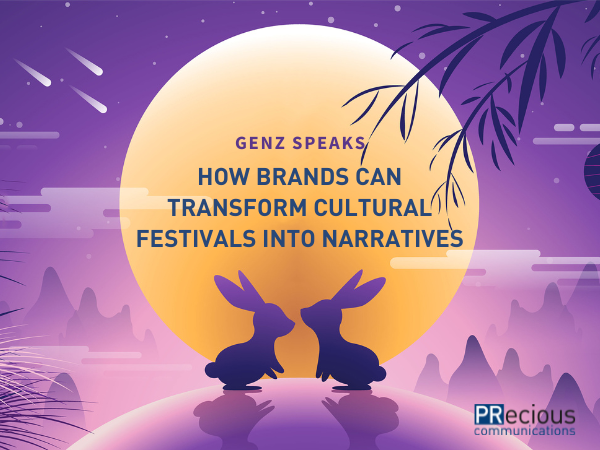The ABCs of Financial Communications and Investor Relations in Southeast Asia

Views From the Top: Big, Bold or Left Behind?
July 9, 2021
Nailing Key Opinion Leader (KOL) Marketing
August 10, 2021
Move over, Silicon Valley. Southeast Asia is poised to become the new epicentre of fintech action, as the region continues to see a flurry of SPAC mergers/De-SPACs, IPO exits and M&As. According to data from PWC and Genesis Alternative Ventures, VC funding in Southeast Asia has been seeing steady growth since 2014, with the first quarter of 2021 alone hitting US$6 billion in equity funding. Investor sentiment towards fintech in the region is clearly bullish, given the region’s favourable mobile engagement climate, increasing nominal GDP, and strong momentum of deals activity in Singapore & developing markets such as Indonesia, Thailand, Vietnam and the Philippines. Consequently, investor relations has become a pivotal function in startups looking to expand.
Carsome Group, one of the region’s largest online used car marketplaces, recently hit a milestone as it became Malaysia’s first unicorn after acquiring listings platform iCar Asia from Catcha Group in a deal estimated to reach over $200 million. In April, fintech platform Fave started setting its sights on India’s consumer market – with Indian merchant commerce Pine Lab acquiring Fave for $45 million. Earlier this year, Singapore ride-hailing platform Ryde announced that it is eyeing a $200 million IPO on Singapore Exchange in 2022.
Over the last few months, we have particularly witnessed a rising trend in Southeast Asia’s prolific fintech landscape: Southeast Asian startups planning to go public via the SPAC route (also check out our earlier blog post: Seizing Opportunities as Southeast Asia Enters a SPAC-tacular Era). Earlier this year, Southeast Asia’s leading online travel startup Traveloka attracted media attention when it announced plans around a SPAC merger. Additionally, ride-hailing SuperApp Gojek, among a growing number of unicorn startups intending to list in the US, is said to be considering a SPAC as an expansion strategy.
What does Southeast Asia’s increasingly competitive tech landscape mean for startups seeking funding and widespread publicity? Increased competition for investors’ attention only means that startups have to work smarter and employ more strategic financial communications initiatives to reach their goals faster.
What does it take to win the startup game amidst Southeast Asia’s highly competitive and dynamic fintech landscape? Here are some tips based on our financial comms and investor relations work with some of the region’s hottest startups.
-
Different moves, different considerations
There’s no “one-size-fits-all” rule when it comes to financial communications and investor relations in Southeast Asia. Aside from customising strategies based on the different profiles of investors being targeted, startups should consider which stage they’re at, and the particular moves they’re planning to make. The communications approach for an IPO, for instance, varies significantly from that of a SPAC. Given that SPACs entail faster timelines (most SPACs take three to four months to close vs. IPOs, which can take more than six months), SPACs would also require a more accelerated approach in executing communications campaigns vis a vis IPOs.
Financial communications initiatives would largely depend on where the investors are situated. Southeast Asia is a fragmented market: If you’re trying to attract investors around the region, you’d need to be more targeted and localised in each Southeast Asian market. Different markets have different communications nuances after all – so it will come as no surprise that bombarding Thai investors with the exact same pitch used to target Singapore investors will just land on deaf ears (we’ve also written a blogpost on the importance of thinking regional, acting local in Southeast Asian PR).
-
Build transparency
Just like any other relationship, investor relationships hinge on the concept of trust. And once this trust is broken, it’s hard to repair and rebuild the relationship. New investors need to have a clear picture of what they are getting into. Existing shareholders also have the right to know how your startup is doing at each stage.
You don’t win loyal investors over by hiding the negative things about your startup; you win them over by sharing the good stuff, while acknowledging some weak points your startup further needs to work on as your startup grows.
When a crisis strikes (and yes, it’s very normal), you need to be proactive in your approach. Share the implications of the bad news with shareholders, while reassuring them about the different steps your company is taking to mitigate the negative impact.
Make it a point to keep on giving your investors regular updates. Investor relations is not just some one-off initiative; it is something you need to nurture constantly.
-
Strategic planning
The message you deliver during your briefing calls can make or break your startup’s image. So, be sure that you are presenting your startup in the best way. The choice of words and how you actually deliver the message to investors have a bearing on how investors will perceive your brand. Stammering and failing to appear confident can dampen perceived credibility. You need to look self-assured and in control in front of investors. After all, they are potentially betting on your startup. If the founders themselves don’t appear confident about the outlook of the company, how can shareholders feel that it’s a sustainable and healthy business worth investing in?
An ounce of prevention is definitely worth more than a pound of cure: You need to ensure that your team has prepared some responses to anticipated questions. If possible, do a short dry run ahead of the briefing call.
Want to go big in the Southeast Asian decade but unsure where to begin? We have worked with startups across all sizes, and have supported them in their SPAC, IPOs, and M&A journeys. Reach out to our team to explore how we can help you amp up your financial communications and investor relations game in the Southeast Asian decade.








